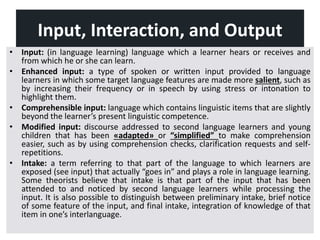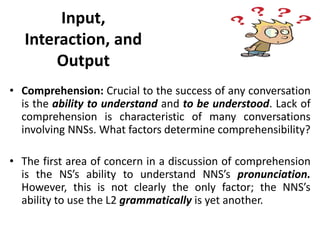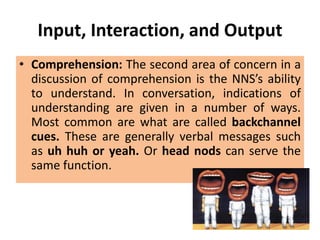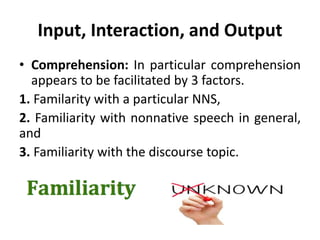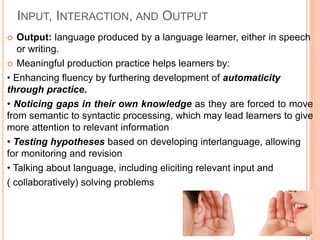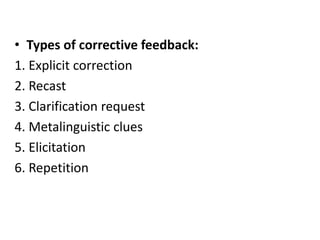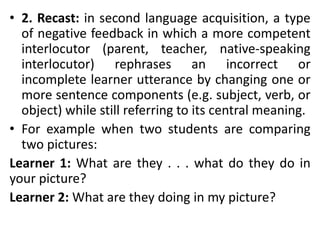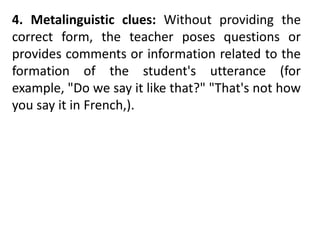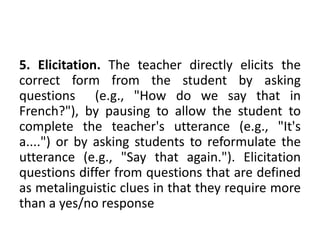The document discusses various types of language input provided to language learners, including comprehensible input containing linguistic items slightly beyond the learner's competence, and modified input using simplifications to aid comprehension. It also examines interaction and feedback, noting the interaction hypothesis that language acquisition benefits from negotiation of meaning during communication breakdowns and the various forms feedback can take, such as recasts, clarification requests, and explicit correction.
